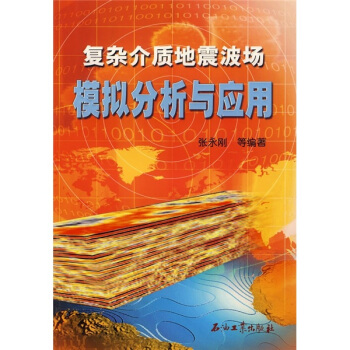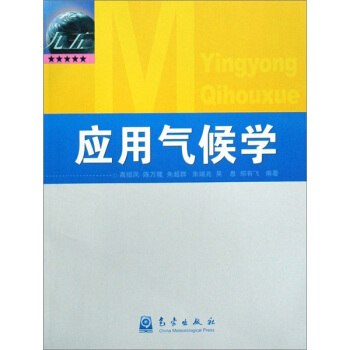![物理經典教材:玻色化和強關聯係統(影印版) [Bosonization and Strongly Correlated Systems]](https://pic.windowsfront.com/10104525/c919f631-54f8-40de-a49f-99ae8f384762.jpg)

具體描述
內容簡介
Technical aspects of bosonization、A simple case of Bose-Fermi equivalence: Jordan-Wigner、Transformation、One-dimensional fermion States near the Fermi points、Chiral anomaly、Anomalous commutators、Ganssian model. Lagrangian formulation、Bosonization、Interaction with an electromagnetic field; gauge invariance、Conformal symmetry and finite size effects、Gaussian model in the Hamiltonian formulation、Virasoro algebra、Ward identities等等。內頁插圖
目錄
PrefaceAcknowledgements
Part I: Technical aspects of bosonization
A simple case of Bose-Fermi equivalence: Jordan-Wigner ransformation
One-dimensional fermion tates near the Fermi points
Chiral anomaly
Anomalous commutators
Ganssian model. Lagrangian formulation
Bosonization
Interaction with an electromagnetic field; gauge invariance
Conformal symmetry and finite size effects
Gaussian model in the Hamiltonian formulation
Virasoro algebra
Ward identities
Subalgebra sl(2)
Structure of Hilhert space in conformal theories
Differential equations for correlation functions
Dotsenko——Fateev bosonization scheme for the minimal models
Current (Kac-Moody) algebras; the first assault
Sugawara Hamiltonian for Wess-Zumino-Novikov-Witten model
Knizhnik-Zamolodchikov (KZ) equations
Relevant and irrelevant fields
Bose-Einstein Condensation in two dimensions; Beresinskii-
Kesterlitz-Thouless transition
The sine-Gordon model
The renormalization group analysis
Exact solution of the sine-Gordon model
Spin S-1/2 Heisenberg-lsing chain
Explicit expression for the dynamical magnetic susceptibility
Ising model
More about the WZNW model
Special cases
1.1 SU1(2) WZNW model as a Gaussian model
1.2 SU2(2) WZNW model and the Ising model
1.3 SU4(2) as a theory of two bosonic fields
1.4 SUI0(2) as a theory of three bosonic fields
Deformation of the WZNW model and coset constructions
Non-Abelian bosznization
WZNW model in the Lagrangian formulation
Derivation of the Lagrangian
Calculation of a nontrivial determinant
Part II: Application of the bosonization technique to physical models
in (1 + l)-dimemions
Interacting fermions with spin
Spin-l/2 Tomonaga-Luttinger liquid
Instabilities of a Tomonaga-Lnttinger liquid
Electron-phonon interaction
1.1 Incommensurate band filling, the effect on K
1.2 Commensurate band filling
1.3 Appendix
Spectral gap in the spin sector
Optical conductivity
Gap in the charge sector at half-filling and the case of small doping
Appendix. RG equations for the model of one-dimensional electrons
from the SU(2) current algebra
Interacting fermions with broken spin rotational symmetry
U(l)-symmetric Thirring model: relation to sine-Gordon and
massive Thirring models
XYZ Thirring model
Spin correlation functions
Theroleofmagneticfield
IV.ISpin-floptransitionintheXYZmodel
IV.2Toymodelforanorbitalantfferromagnet
WhatmayhappenwithaTomonaga-Luttingerfiquidinthree imensions
Appendix.FermionicGreensfunction
1.1 oordinatespaceGreensfunction
1.2 hespectralfunction(vc>vs)
1.3 ouriertransformoftheGreensfunction(re>v)
1.4 hespectralfunction,vs>vc
1.5 ouriertransformofGreensfunction,vs>vc
TwoweaklycoupledTomonaga-Luttingerliquids;spinlemcase
Spinliquidsinonedimension:exampleofspinladders
Couplingofidenticalchains;theAbelianbosonization
Correlationfunctionsfortheidenticalchains
II.lStaggeredsusceptibilityoftheconventional(Haldane)spin iquid
II.2Dimerizedspinliquid
Inequivalentchains;non-Abelianbosonization
Stringorderparameterinthespin-laddermodel
AppendixA.Thetopologicaltermemergingfromthe
Wess-Zuminoterm
AppendixB.HiddenZ2~Z2symmetryandstringorderparameter
inthebond-alternatingS——-1/2Heisenbergchain
Spin-l/2Heisenbergchainwithalternatingexchange
Appendix.Multiparticleformfactors
Superconductivityinadopedspinliquid
Bosonizationandfermionization
Superconductingfluctuations
Conclusions
Appendix.Conditionsforsuppressionofthesingle-particletunneling
EdgestatesinthequantumHalleffect
PartⅢ Singleimpurityproblems
Potentialsattering
Introduction
Reduction of the local scattering problem to one dimension
The scattering phase
X-ray edge problem (Fermi liquids)
Introduction
Statement of the problem
II.1 Many-body formulation
I1.2 One-particle formulation
Linked dusters expansion
Nozi6res-De Dominicis solution
Exact solution for the overlap integral
Bosonization approach to the X-ray edge problem
VI.1 Boundary condition changing operator (chiral anomaly)
VI.2 X-ray response functions via bosonization
Appendix A. Parquet approximation
Appendix B. The Wiener-Hopf method
Appendix C. Orthogonality of Slater determinants
Impurities in a Tomonaga-Luttinger liquid
Introduction
Weak-coupling analysis of a single impurity
II.1 Bosonization of the impurity Hamiltonian
II.2 Lagrangian formulation: local action
11.3 Renormalization group analysis of local operators
Strong-coupling analysis
III.1 Open boundary bosonization
111.2 Strong-coupling fixed point
Exact solution at K=1/2 and the conductance
Relation of the impurity backscattering model to the Caldeira-eggett model
X-ray edge problem in Tomonaga-Luttinger liquids
Multi-channel Kondo problem
Introduction
Qualitative analysis
The Toulouse limit
The Emery-Kivelson solution
IV.I Greens functions and zero-field free energy
IV.2 Magnetic field effects
IV.3 Wilson ratio
The Toulouse limit for the four-channel Kondo model
Coulomb blockade
VI.1 One-dimensional electrons in point contacts
VI.2 Coulomb blockade and two-channel Kondo model
General bibliography
精彩書摘
This volume provides a detailed account of bosonization. This important tech-nique represents one of the most powerful nonperturbative approaches to many-body systems currently available. The first part of the book examines the technical aspects of bosonization. Topicsinclude one-dimensional fermions, the Gaussian model, the structure of Hilbertspace in conformal theories, Bose-Einstein condensation in two dimensions, non-Abelian bosonization, and the Ising and WZNW models. The second partpresents applications of the bosonization technique to realistic models includingthe Tomonaga-Luttinger liquid, spin liquids in one dimension and the spin-1/2 Heisenberg chain with alternative exchange. The third part addresses theproblems of quantum impurities. Chapters cover potential scattering, the X-rayedge problem, impurities in Tomonaga-Luttinger liquids and the multi-channelKondo problem. This book will be an excellent reference for researchers andgraduate students working in theoretical physics, condensed matter physics andfield theory.前言/序言
We used to think that if we know one, we knew two, because one and oneare two. We are finding that we must learn a great deal more about and.Sir Arthur Eddington, from The Harvest of a Quiet Eye, by A. MackayThe behaviour of large and complex aggregations of elementary particles,it turns out, is not to be understood in terms of a simple extrapolation ofthe properties of a few particles. Instead, at each level of complexity entirelynew properties appear, and the understanding of the new behaviours requiresresearch which I think is as fundamental in its nature as any other.E W. Anderson, from More is Different (1972)
High energy physics continues to fascinate people inside and outside ofscience, being perceived as the most fundamental area of research. Itis believed somehow that the deeper inside the matter we go the closerwe get to the truth. So it is believed that the truth is out there-athigh energies, small distances, short times. Therefore the ultimate theory,Theory of Everything, must be a theory operating at the smallest distancesand times possible where there is no difference between gravitational andall other forces (the Planck scale). All this looks extremely revolutionaryand complicated, but once a condensed matter physicist has found timeand courage to acquaint himself with these ideas and theories, thesewould not appear to him utterly unfamiliar. Moreover, despite the factthat the two branches of physics study objects of vastly different sizes,the deeper into details you go, the more parallels you will find betweenthe concepts used. In many cases the only difference is that models arecalled by different names, but this has more to do with funding than withthe essence.
用戶評價
每次看到“經典教材”這樣的字眼,我都會有一種莫名的期待。這本《物理經典教材:玻色化和強關聯係統(影印版)》,光從書名上就能感受到它所承載的知識分量。我一直對那些能夠揭示物質深層本質的理論感到著迷,而“強關聯係統”正是我一直想要深入瞭解的領域。這些係統中的粒子之間復雜的相互作用,常常會湧現齣一些單粒子理論無法解釋的奇特現象,例如高溫超導、量子磁性等等。我希望這本書能夠為我打開一扇理解這些復雜係統的新視角。而“玻色化”,作為一種強大的理論工具,我希望它能夠幫助我理解,如何將原本費米子構成的復雜多體問題,通過一些巧妙的變換,轉化為更易於處理的玻色子模型。我期待書中能夠給齣清晰的推導過程,讓我能夠真正掌握這種方法的精髓。同時,我對於玻色化在描述一維電子係統、量子相變等具體問題中的應用也充滿興趣。影印版的設計,也許能讓我體會到一種復古的學術氛圍,讓我在學習理論知識的同時,也能感受到知識傳承的厚重感。
評分說實話,這本書的名字我有點打怵。 “玻色化和強關聯係統”聽起來就不是那種能在午後陽光下輕鬆翻閱的小說,更像是一顆顆需要費力啃下的硬骨頭。我一直對“強關聯”這個詞本身就有一種莫名的吸引力,它暗示著粒子之間的相互作用是如此復雜,以至於單個粒子的行為無法簡單預測,而是湧現齣一些宏觀的、意想不到的集體效應。而“玻色化”這個概念,則像是試圖用一種更簡化的語言來描述這些復雜的係統,特彆是那些在低維度下錶現齣奇特量子行為的係統。我希望這本書能夠幫助我理解,在諸如一維材料、超導、磁性等領域,玻色化技術是如何發揮其強大威力,將看似難以處理的電子-電子相互作用等問題,轉化為相對更容易操作的玻色子模型。我尤其期待書中能夠提供一些具體的例子,展示玻色化如何成功地解釋一些實驗觀測到的現象,例如某些材料的普適標度律,或者拓撲序的存在。影印版的書籍,我總覺得有一種特殊的質感,好像能觸摸到知識的厚重,也希望它在排版和圖示上能夠盡量清晰,不會讓我在理解復雜的數學推導時徒增負擔。
評分這本書的名字就透著一股學究氣,"物理經典教材:玻色化和強關聯係統(影印版)"——光是讀著就覺得腦門兒要被炸開瞭。我拿到手的時候,它沉甸甸的,封皮那種略帶磨損的質感,仿佛承載瞭無數前輩的智慧與汗水。我一直對那些能夠統一描述多種物質現象的理論框架非常著迷,而“玻色化”和“強關聯係統”這兩個概念,在我腦海裏就像是通往更深層物理世界的一扇神秘大門。我希望這本書能夠像一位經驗豐富的嚮導,帶領我穿越那些晦澀的數學符號和抽象的概念,去理解量子多體係統那些令人驚嘆的集體行為。我尤其好奇,作者將如何巧妙地將復雜的玻色化技術應用於那些在凝聚態物理中至關重要的強關聯係統中,例如一維電子係統、量子霍爾效應以及一些拓撲相。我知道這絕非易事,但我期待這本書能提供清晰的脈絡和詳實的推導,讓我不僅能瞭解“是什麼”,更能理解“為什麼”。影印版的設計也很有意思,保留瞭原汁原味的學術氣息,或許還能從中窺見一些時代的技術印記,這本身也是一種獨特的閱讀體驗。總而言之,我懷著一種既敬畏又期待的心情,準備在這本厚重的書裏開啓我的探索之旅。
評分這本書,讓我聯想到瞭當年那些在圖書館的角落裏,靜靜等待被發掘的珍寶。《物理經典教材:玻色化和強關聯係統(影印版)》,光是這個名字就充滿瞭學術的厚度,我期待它能夠成為我理解現代凝聚態物理核心概念的敲門磚。我一直對如何用更基礎的理論去描述更復雜的物理現象感到好奇,而玻色化和強關聯係統恰恰是解決這一難題的關鍵。我希望這本書能夠深入淺齣地介紹玻色化是如何將費米子係統轉化為等效的玻色子場,從而簡化瞭對低維強關聯係統的分析。我特彆希望書中能有詳細的數學推導,讓我能一步步跟著作者的思路,理解其中的邏輯和技巧。同時,我對於“強關聯係統”本身所包含的豐富物理內容也充滿興趣,比如量子相變、拓撲序、以及諸如分數量子霍爾效應之類的奇特物態。我期待這本書能夠提供清晰的框架,將這些概念有機地聯係起來,並展示玻色化在理解和預測這些現象中的作用。影印版的形式,或許能讓我感受到原著的學術風格,即便在現代科技如此發達的今天,經典教材的魅力依然不減。
評分這本書的書名,我第一眼看到就覺得它不是那種隨便翻翻就能過去的讀物。 “物理經典教材:玻色化和強關聯係統(影印版)”,它自帶一種嚴謹和深度。我一直對那些能夠統一描述多種復雜物理現象的理論工具充滿好奇,而“強關聯係統”恰恰是當前凝聚態物理研究中最活躍、也最富挑戰性的領域之一。我期待這本書能夠係統地介紹如何處理這些係統中粒子之間的強烈相互作用,以及由此産生的各種新奇量子物態。更讓我感興趣的是“玻色化”這一概念,我希望它能夠為我提供一種全新的視角,去理解如何將復雜的費米子多體問題,通過特定的數學變換,轉化為相對簡單的玻色子描述。我尤其希望書中能有清晰的數學推導,帶領我一步步理解玻色化方法的精妙之處,並展示它是如何成功應用於理解一維電子、量子霍爾效應、以及拓撲相這類重要的物理問題。影印版的形式,讓我感覺仿佛在與曆史對話,試圖還原最原始的學術思考過程,這對我來說是一種獨特的吸引力。
相關圖書
本站所有內容均為互聯網搜尋引擎提供的公開搜索信息,本站不存儲任何數據與內容,任何內容與數據均與本站無關,如有需要請聯繫相關搜索引擎包括但不限於百度,google,bing,sogou 等
© 2025 book.coffeedeals.club All Rights Reserved. 靜流書站 版權所有

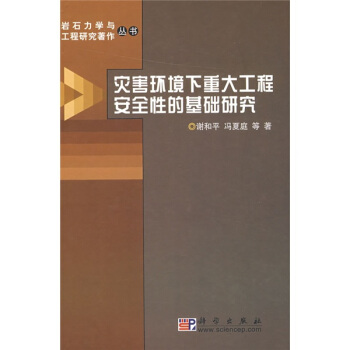
![拓撲學教程:理論及應用 [Introduction to Topology:Theory and Applications] pdf epub mobi 電子書 下載](https://pic.windowsfront.com/10126587/5652a67cNbcad82de.jpg)

![人的安全:概念及應用 [Human Security:The Concept and Its Application] pdf epub mobi 電子書 下載](https://pic.windowsfront.com/10159428/f23cc76b-3550-4a8a-b579-1ae56437d731.jpg)
![不動點理論導論(英文版) [Fixed Point Theory:An Introduction] pdf epub mobi 電子書 下載](https://pic.windowsfront.com/10184576/87eac2f0-9fdc-4693-91f8-6ef00a840c90.jpg)
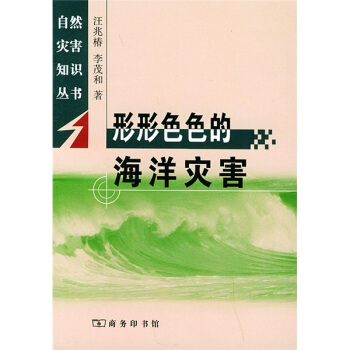
![中國藥用植物種子原色圖鑒 [Illustrated seeds of Chinese medicinal plants] pdf epub mobi 電子書 下載](https://pic.windowsfront.com/10290953/488ceaa4-d632-4550-937d-109fc16de41f.jpg)
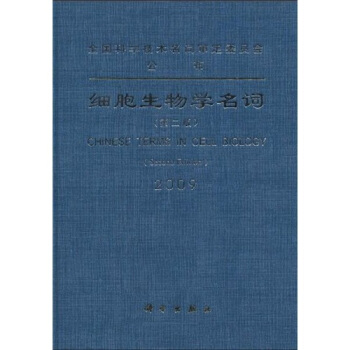
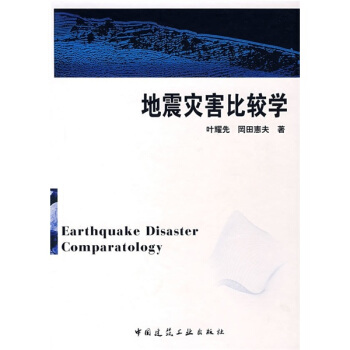

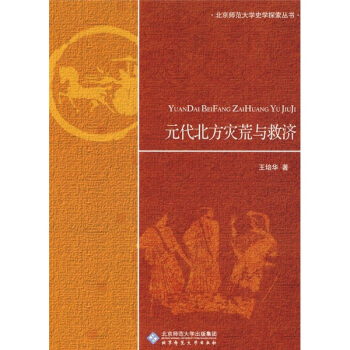
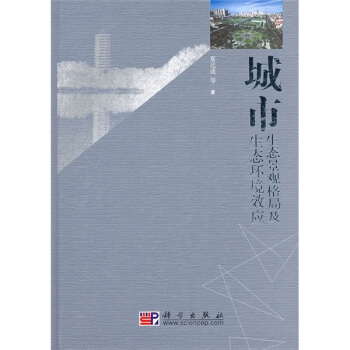
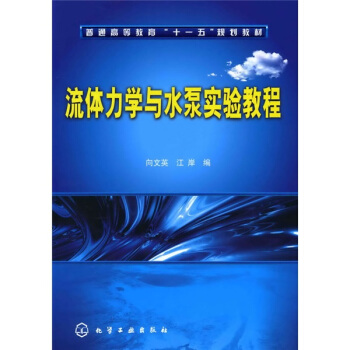
![量子力學簡明教程 [Lectures on Quantum Mechanics] pdf epub mobi 電子書 下載](https://pic.windowsfront.com/10397939/89a5d535-b3be-4bb6-9b2e-0908d6606179.jpg)
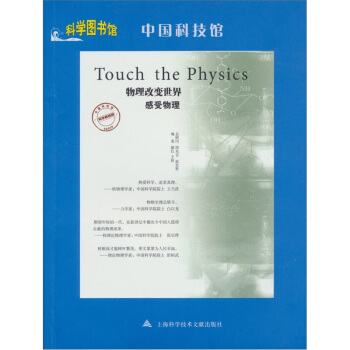
![研究生係列教材:物理學前沿問題 [Frontier Topics in Physics] pdf epub mobi 電子書 下載](https://pic.windowsfront.com/10568852/3e7e4112-0be4-44ab-b95f-af48f89d001e.jpg)
![“十二五”國傢重點圖書:細胞力學進展(英文版) [Advances in Materials and Mechanics] pdf epub mobi 電子書 下載](https://pic.windowsfront.com/10695784/565524f3N82cd97c7.jpg)

